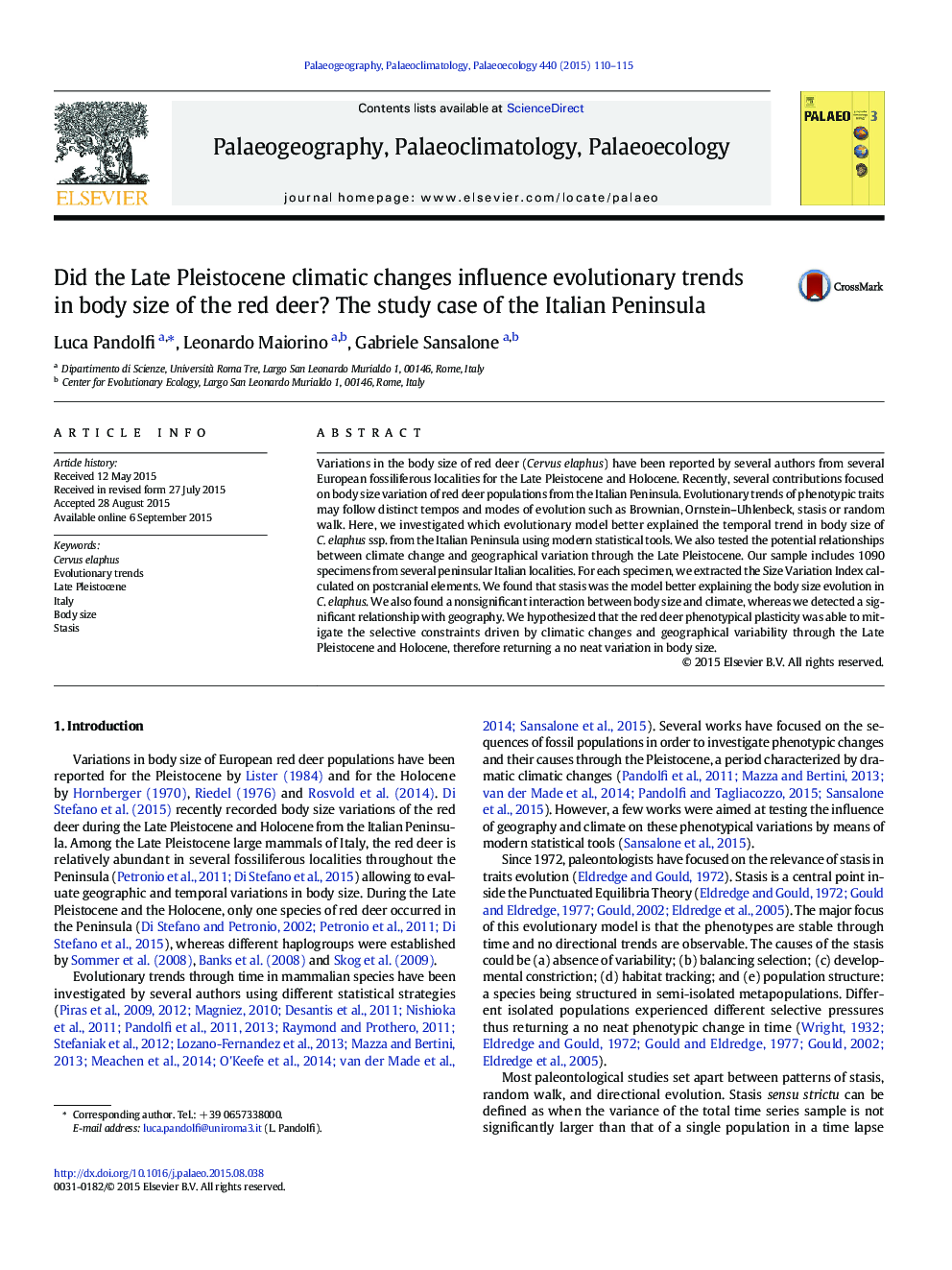| Article ID | Journal | Published Year | Pages | File Type |
|---|---|---|---|---|
| 6349491 | Palaeogeography, Palaeoclimatology, Palaeoecology | 2015 | 6 Pages |
â¢We collected postcranial element of Cervus elaphus from several Italian fossiliferous localities of Late Pleistocene-Holocene to calculate the Size Variation Index.â¢We investigated body size variation and evolutionary trends in Italian red deer.â¢Body size is characterized by stability through time.â¢Size variation is not influenced by Pleistocene-Holocene climate changes.
Variations in the body size of red deer (Cervus elaphus) have been reported by several authors from several European fossiliferous localities for the Late Pleistocene and Holocene. Recently, several contributions focused on body size variation of red deer populations from the Italian Peninsula. Evolutionary trends of phenotypic traits may follow distinct tempos and modes of evolution such as Brownian, Ornstein-Uhlenbeck, stasis or random walk. Here, we investigated which evolutionary model better explained the temporal trend in body size of C. elaphus ssp. from the Italian Peninsula using modern statistical tools. We also tested the potential relationships between climate change and geographical variation through the Late Pleistocene. Our sample includes 1090 specimens from several peninsular Italian localities. For each specimen, we extracted the Size Variation Index calculated on postcranial elements. We found that stasis was the model better explaining the body size evolution in C. elaphus. We also found a nonsignificant interaction between body size and climate, whereas we detected a significant relationship with geography. We hypothesized that the red deer phenotypical plasticity was able to mitigate the selective constraints driven by climatic changes and geographical variability through the Late Pleistocene and Holocene, therefore returning a no neat variation in body size.
